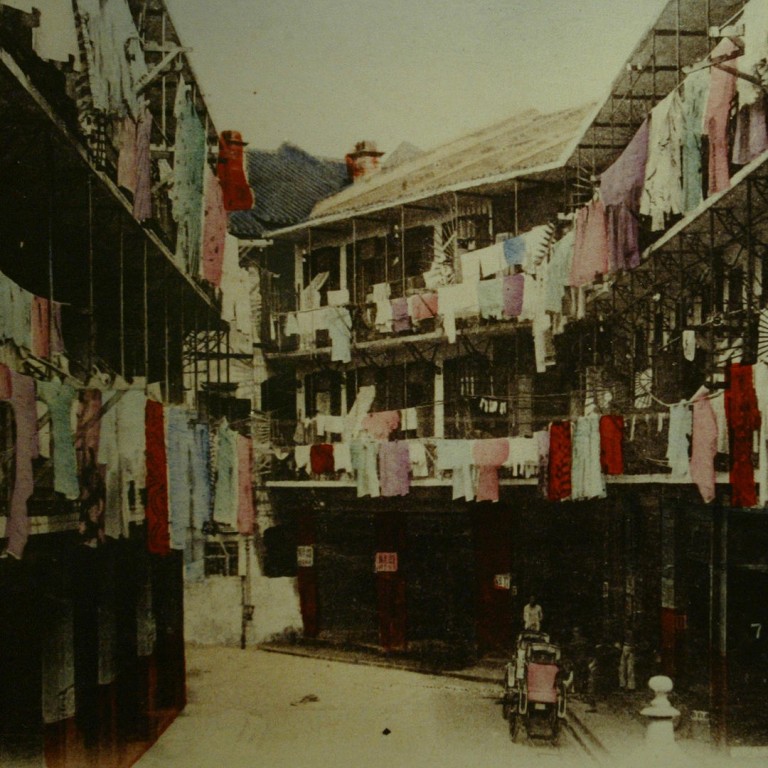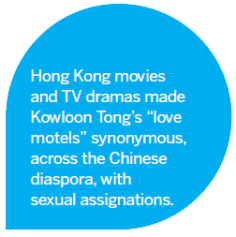
Rooms with an ooh: the history of Hong Kong’s love motels
Popular for illicit trysts, love motels also draw couples seeking some alone time in space-challenged Hong Kong, writes Jason Wordie
A perennial aspect of the local nightlife scene since Hong Kong’s earliest days, “hourly” or “shorttime” hotels have proliferated in recent years.
Historically, rooms rented by the hour were mostly utilised for sexual assignations with temporary and – for the most part – professional partners. Hourly hotels have always operated on a strictly bring-your-own basis in terms of companionship, which protects the proprietors from the charge of operating a brothel.
Before the Pacific war, shorttime hotels were mostly found around long-established “entertainment” districts, such as Wan Chai, Yau Ma Tei and Shek Tong Tsui. Old-style Chinese hotels were extremely basic, and the shorttime version was no exception.
Rooms contained a very hard double bed with a rattan or splitbamboo cover, a porcelain pillow, enamelled spittoons, thin cotton towels, bare light bulbs, a washstand or – depending on the availability of plumbed water – a cold-water sink in the corner and a ceiling fan. Patterned linoleum on the floor and perhaps a brightly coloured wall calendar provided the only decoration.
While these hotels were not – legally speaking – brothels, many prostitutes rented their rooms on a semi-permanent basis, which enabled them to circumvent legal loopholes regarding the sex industry.
The hotel proprietor was not running a brothel; he was also not knowingly living on the earnings of prostitution.

This charge could have been reasonably levelled if a room was rented to a known prostitute on a monthly basis; hotel room rents were – in theory – charged at day rates only. Likewise, the prostitute herself was operating independently, which was also legal.
Throughout the 1970s, many gracious pre-war bungalows in Kowloon Tong were converted into what became known as “love motels”.
These innovations offered a variation on the old short timehotel theme. Given the high walls, quiet backstreet locations and availability of off-street parking, patrons could drive in, a curtain would be pulled across the back of the carport (thus concealing both the driver’s identity and the vehicle’s number plate) and the amorous couple could slip in and out unobserved.

As private car ownership expanded in the 60s, discreet Kowloon-side liaisons became more commonplace, especially after the Cross Harbour Tunnel opened, in 1972. Travelling times were significantly reduced by the new undersea route, as were spousal suspicions of unexplained late-night “meetings”.
Patrons still use short-time establishments for sexual purposes, and residential overcrowding is the main reason for their continued popularity.
Hong Kong’s dangerously overheated housing market has ensured that home ownership – or even some personal space – is now virtually unattainable for an entire generation. Underemployed local graduates’ lack of socioeconomic mobility almost guarantees that thousands of young people will still share a bunk bed with younger siblings in overcrowded public housing estates (if they are lucky enough to have that) when they are thirty-something.
Backstreet hourly hotels, in consequence, are almost the only option if they want to spend some private time with a partner.
These days, hourly hotels can be found all over Hong Kong, but are most common in more out-ofthe- way, relatively low-rent locations.
Mong Kok and Tsuen Wan, both favoured by mainlanders on shopping trips, are popular spots; overnight rates are reasonable, and if all their patrons want is somewhere to stash their bags, have a shower and crash out after a day pounding the pavements, these places fit the bill perfectly.
For more on Hong Kong history and heritage, go to scmp.com/topics/old-hong-kong

